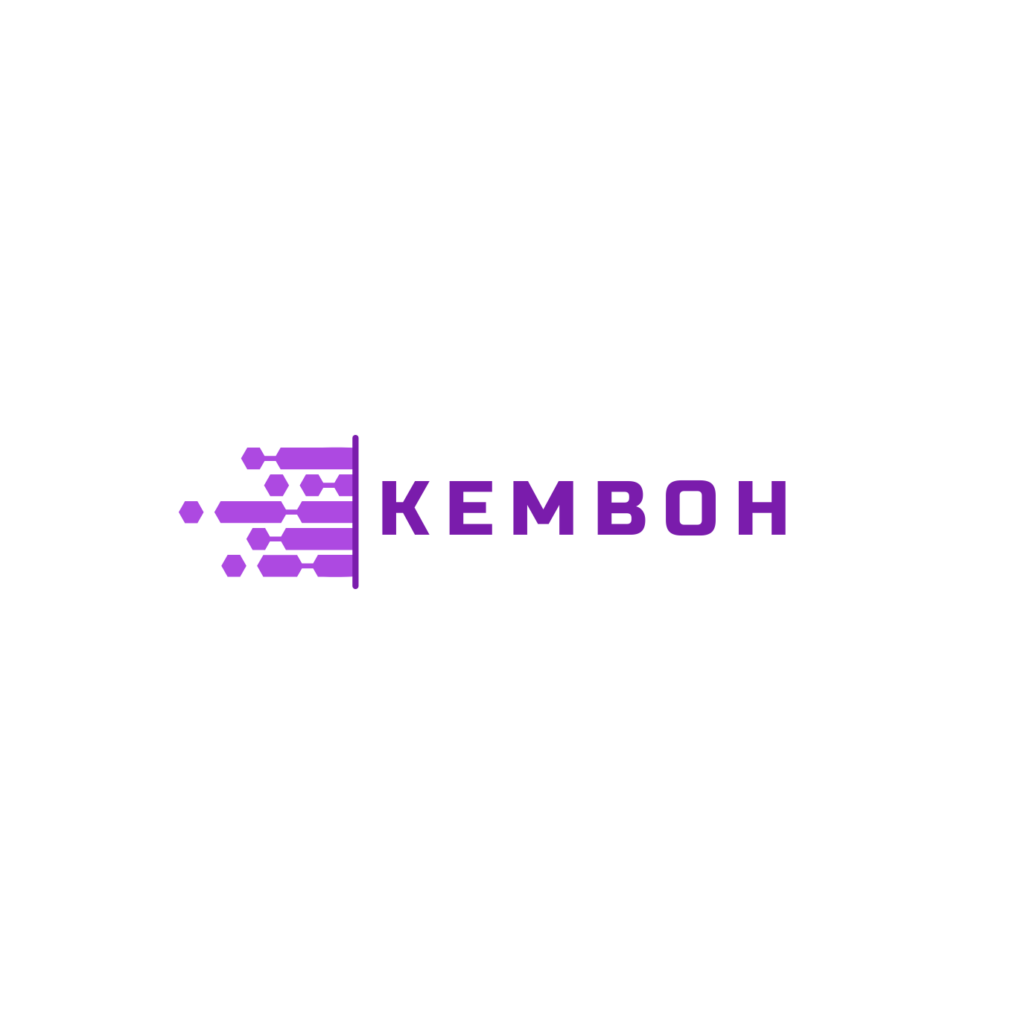Freelancing is a dynamic and ever-evolving career path with countless opportunities for growth and success. However, as a freelancer, it can be easy to get caught up in the day-to-day tasks, losing sight of the bigger picture. This is where goal setting becomes critical. In 2025, setting clear and structured goals will help you stay focused and empower you to take control of your career trajectory.
The importance of goal setting for freelancers cannot be overstated. It serves as a roadmap, providing direction and purpose. Freelancers often feel directionless without well-defined goals, leading to procrastination, missed opportunities, and a lack of progress. When you set clear goals, you create a sense of accountability, which translates into better time management, improved productivity, and the ability to measure your success.
This post will walk you through a step-by-step process to set and achieve your freelancing goals in 2025. Following this guide, you can prioritize your efforts, track your progress, and celebrate the victories of fulfilling your freelance ambitions.
1. Reflect on Your Freelance Journey
Before you set new goals for 2025, it’s essential to take a step back and reflect on where you are in your freelancing career. This self-assessment is a crucial first step, as it helps you understand your successes and areas for improvement. Reflecting on your journey will provide the foundation for setting realistic and relevant goals.
Start by evaluating your current freelancing situation: what have you accomplished so far? Have you reached the financial goals you set last year? What clients have you worked with, and what projects have you completed? Recognizing your wins, no matter how small, helps build confidence and motivation for the upcoming year. At the same time, it’s equally important to acknowledge your challenges. Did you struggle to find clients? Were you unable to meet deadlines, or did you face any skill gaps? Identifying these pain points will help you understand where to focus your energy as you set your goals for 2025.
Understanding where you stand is vital because it informs your next steps. Your past experiences, both positive and negative, will provide valuable insights into the types of goals you should set. For example, if you found it difficult to balance multiple projects in the past, a good goal for 2025 could be to improve time management skills or take on fewer clients with larger projects. If you’ve consistently faced financial instability, set goals to increase your income or diversify your revenue streams.
Reflecting on your freelancing journey isn’t about being overly critical but learning from past experiences. With this reflection, you can identify patterns, strengths, and weaknesses to guide you when setting your goals for the new year. Whether you want to scale your business, refine your skill set, or expand your client base, a thorough reflection ensures that your goals align with your personal and professional growth.
2. Set SMART Goals for 2025
Setting goals is essential for freelancers, but simply writing down vague goals like “earn more money” or “get better clients” isn’t enough. To make real progress, you need a framework that ensures your goals are clear, actionable, and achievable. This is where the SMART goal framework comes in.
The SMART goal framework stands for:
- Specific: Your goal should be clear and focused. Avoid vague language and aim for a concrete goal concrete goal.
- Measurable: You should be able to track your progress. Set quantifiable criteria to determine if you’re on track.
- Achievable: While your goals should challenge you, they should also be realistic and attainable within your capabilities.
- Relevant: Your goal should align with your broader freelance business objectives and personal aspirations.
- Time-bound: Set a clear deadline for your goal, so you have a target date to work toward.
Let’s look at some examples of SMART goals tailored for freelancing:
- Be specific: Instead of saying, “Earn more,” aim to “increase my income by 25% by the end of 2025 through client expansion and price adjustments.”
- Measurable: “Acquire five new clients in the next six months by reaching out to 10 potential leads each week.”
- Achievable: “Invest in an online course to improve graphic design skills and complete it within two months.”
- Relevant: “Raise my rates for current clients after completing the online course to match the improved skill set.”
- Time-bound: “Launch a personal website in the next three months to showcase my portfolio and attract more clients.”
By setting SMART goals, you create a clear path to success, ensuring that you focus on what you want to achieve and how to make it happen.
How to Make Goals Challenging but Attainable
While your goals need to be realistic, they should also push you beyond your comfort zone. Setting overly easy goals won’t help you grow and won’t create the motivation you need to succeed. On the other hand, goals that are too difficult or impossible can leave you feeling defeated.
To strike the right balance, aim for goals that require a stretch of your current abilities but are still within the realm of possibility. For example, if you’ve been freelancing for a few years and want to increase your income, a goal like “double my monthly earnings in the next three months” might be too aggressive. Instead, you could set a more achievable goal like “increase my income by 30% over the next six months.”
3. Break Down Long-Term Goals Into Smaller Steps
Setting long-term goals is crucial, but they can often feel overwhelming. A lofty goal like “expand my freelance business” or “earn six figures by the end of 2025” can make it difficult to know where to start. The solution? Break these significant goals into smaller, manageable steps.
Why Breaking Down Goals is Important
Breaking big goals into smaller tasks makes them less intimidating and easier to track. It also allows you to focus on daily or weekly actions that gradually lead to completing your long-term goals. Small wins along the way will boost your motivation and keep you on track.
A Practical Approach to Breaking Down Goals
Your long-term goal is to increase your income by 30% in 2025. Here’s how you can break this down:
- Monthly Goals: Focus on gaining one new client per month or increasing your rates for at least two existing clients every month.
- Weekly Goals: Set a target of reaching out to five potential clients per week or dedicating at least 10 hours to improving your skills.
- Daily Goals: Allocate time each day to prospect clients, refine your portfolio, or learn new tools to help you complete projects more efficiently.
For example, if your goal is to increase income, breaking it down could involve actions like:
- Attracting More Clients: Send 10 personalized outreach emails each week to potential clients or attend at least one monthly networking event.
- Raising Rates: Assess current rates and research industry standards, gradually increasing your pricing for new projects or clients.
- Diversifying Income Sources: Explore new income streams such as creating online courses, offering consultancy, or joining affiliate programs.
By breaking down long-term goals into smaller steps, you’ll find that your path to success becomes much more apparent and the journey less overwhelming.
4. Create a Realistic Action Plan
Once you have your SMART goals and smaller tasks, it’s time to turn them into action. Without a solid plan, the best intentions can fall by the wayside. A realistic action plan keeps you on track and ensures consistent progress toward your freelancing goals.
Building an Actionable Plan with Clear Timelines
Your action plan should outline exactly what steps you need to take and when. A plan without timelines is just a wish list. By assigning deadlines to each goal and task, you create a sense of urgency that keeps you focused.
Start by taking each of your smaller goals and breaking them down into actionable steps. For example, if your goal is to increase your income, your action plan could include:
- By the end of month one, Update your portfolio and create a list of five target clients to pitch.
- By the end of month two, Raise your rates for three existing clients and secure one new high-paying project.
- By the end of month three, Attend two networking events and explore one new income stream, like affiliate marketing.
Consistency and Discipline Are Key
One of the biggest challenges freelancers face is maintaining consistency. Letting deadlines slip or work become scattered is easy without a boss or structured schedule. To avoid this, you need discipline. This means committing to your plan, even when motivation is low.
Make sure to prioritize your tasks every day. Consider using time-blocking techniques, where you set aside specific hours of the day for different tasks. This minimizes distractions and ensures that you focus on what matters most.
Tools to Help with Planning
Using tools can simplify creating and following through with your action plan. Some of the most helpful tools include:
- Calendars: Google Calendar or other digital calendars to schedule your tasks and deadlines.
- Project Management Apps: Tools like Trello or Asana can help you track progress and organize tasks.
- Time Management Apps: Pomodoro timers or time-tracking apps like Toggl can help you stay on track and measure how efficiently you’re working.
5. Stay Accountable and Track Progress
Accountability is a powerful motivator, especially for freelancers who work independently. Regularly tracking your progress helps you stay on track, celebrate small wins, and adjust your plan if necessary. But it’s not always easy to hold yourself accountable, so it’s essential to integrate accountability into your freelancing routine.
Tracking Progress Regularly
Start by reviewing your goals and action plan regularly. Set a weekly or monthly check-in to assess whether you’ve achieved your milestones or need to adjust your strategy.
For instance, at the end of each month, take a look at:
- How many clients have you attracted or completed projects?
- Whether you’ve met your financial goals for the month.
- How much time have you spent working on skill development?
Tracking your progress keeps you accountable and allows you to see how much progress you’re making. This visual representation of your achievements can be incredibly motivating and push you to stay consistent.
Using Accountability Tools
There are several ways you can hold yourself accountable:
- Accountability Partners: Find someone, whether a fellow freelancer, mentor, or friend, who will regularly check in with you to track your progress. This external support system can help you stay committed to your goals.
- Productivity Apps: Use tools like Trello, Notion, or Google Sheets to log your achievements, set deadlines, and monitor progress.
- Journaling: Reflecting on your work at the end of each day or week in a journal can help you stay on track and adjust goals if necessary.
Review and Adjust Your Goals as Needed
Sometimes, things don’t go according to plan. It’s essential to be flexible and open to revising your goals. If you’ve met a particular target ahead of schedule, it may be time to raise your goal or take on more challenging tasks. If you’re falling behind, adjust the timeline or break down the goal into smaller steps.
Regular reviews also help you see if your goals align with your personal and professional growth. As your career progresses, you might realize your priorities are shifting, so be prepared to adapt.
6. Improve Your Skills Continuously
Your skill set is your most valuable asset as a freelancer. The freelancing landscape constantly evolves, and staying ahead of the curve is essential to remaining competitive. Continuous improvement is a must to achieve your freelancing goals in 2025. Investing in yourself and consistently learning ensures your services stay relevant and in demand.
The Importance of Upskilling
Freelancers who commit to improving their skills will likely land higher-paying clients, tackle more complex projects, and scale their businesses. Whether mastering new software, learning a new technique, or staying up to date with industry trends, there are always opportunities to grow.
Some common areas freelancers might focus on to level up include:
- Technical skills: Learning new tools, software, or platforms related to your niche (e.g., learning new design software for graphic designers or mastering SEO for writers).
- Business skills: Improving negotiation skills, project management, or understanding contracts to handle clients more effectively.
- Soft skills: Enhancing communication, time management, or client relations to improve your freelancing experience.
Resources for Improving Skills
There are many ways to improve your freelancing skills. Some of the best resources include:
- Online Courses: Platforms like Udemy, Coursera, or Skillshare offer various courses tailored to freelancers. Whether you’re a writer, designer, or developer, you can find a course that suits your needs.
- Workshops and Webinars: Attend industry-specific seminars and webinars to stay updated with the latest trends.
- Online Communities and Forums: Joining freelancing communities on Reddit, Facebook Groups, or industry-specific forums gives you access to valuable advice, peer feedback, and updates on new tools or techniques.
- Books and Blogs: Reading books by industry leaders or subscribing to blogs and newsletters focusing on freelancing can provide insights and strategies to help you succeed.
Remember, the more you learn, the more you can offer your clients, making you a more valuable and sought-after freelancer. A commitment to lifelong learning will set you apart and provide the foundation to achieve your freelancing goals.
7. Maintain a Work-Life Balance
Freelancing offers freedom and flexibility but can also be overwhelming and lead to burnout if not appropriately managed. The key to achieving your freelancing goals in 2025 is maintaining a healthy balance between work and personal life. Your productivity, creativity, and overall well-being suffer when you constantly work without taking time.
The Importance of Balancing Work and Personal Life
Without a clear division between work and personal time, it can be easy to feel like you’re always “on.” This can lead to stress, fatigue, and decreased performance. A work-life balance isn’t just about having time for hobbies or family; it’s about ensuring that your professional and personal needs are met, which will keep you energized and motivated.
Practices for Maintaining a Healthy Balance
Here are some strategies to help you strike the right balance:
- Set Clear Work Hours: One of the biggest challenges for freelancers is knowing when to stop working. Setting specific work hours daily helps create structure and allows you to disconnect when your workday is over entirely.
- Take Regular Breaks: Working for long periods without a break can lead to burnout. Use techniques like Pomodoro (work for 25 minutes, then take a 5-minute break) to stay focused and avoid mental fatigue.
- Prioritize Personal Time: Schedule time for activities that help you recharge, whether it’s spending time with loved ones, pursuing a hobby, or simply relaxing. This downtime is crucial for maintaining mental and emotional health.
- Outsource or Delegate Tasks: If you have too many projects, consider outsourcing some tasks to others. This lets you focus on high-priority work while ensuring you aren’t overwhelmed.
Setting Boundaries and Prioritizing Self-Care
When you work for yourself, it’s easy to say “yes” to every opportunity that comes your way. However, overcommitting can be a significant cause of burnout. Setting boundaries with clients—such as limiting your available hours for calls or emails—helps create a healthy working environment.
Additionally, self-care is not just a buzzword; it’s a necessity. Eating well, exercising regularly, getting enough sleep, and managing stress are all key components of self-care that contribute to your productivity and success as a freelancer.
Maintaining a proper balance will ensure you’re productive, happy, and healthy, ultimately leading to tremendous success in your freelancing journey.
8. Celebrate Milestones and Achievements
Freelancing can be challenging, and it’s easy to get caught up in the hustle without taking the time to recognize your accomplishments. Celebrating your progress is not just about feeling good—it’s essential to maintaining motivation and boosting your confidence. In 2025, make it a point to celebrate your milestones, no matter how big or small.
The Importance of Celebrating Achievements
Achieving freelancing goals often requires hard work, persistence, and overcoming obstacles. When you acknowledge your progress, you reinforce the positive behaviors and habits that helped you succeed. This sense of accomplishment keeps you motivated, particularly when facing setbacks or challenges in your freelancing journey.
Celebrating milestones also reminds you of how far you’ve come, especially when things feel slow or difficult. It’s easy to get discouraged when constantly looking ahead at bigger goals, but pausing to celebrate the small wins helps maintain a healthy perspective.
How to Celebrate Your Freelance Successes
Celebrating milestones doesn’t always mean throwing a big party. Here are some simple, effective ways to recognize your achievements:
- Treat Yourself: After finishing a big project or hitting a significant income goal, reward yourself with something you enjoy. This could be a nice meal, a short vacation, or even a day off to recharge.
- Reflect on Your Growth: Take a moment to reflect on where you started and how far you’ve come. Consider writing down your achievements in a journal or sharing them on social media to inspire others and reflect on your progress.
- Share Your Success with Others: Don’t hesitate to share your wins with friends, family, or freelancers. It’s a great way to build your support network and celebrate your hard work.
- Celebrate Your Learning: Even if you haven’t reached all your goals, celebrating the knowledge you’ve gained and the lessons learned can be just as rewarding. This could be recognizing a new skill you’ve mastered or a new client relationship you’ve built.
Remember, every step forward is worth acknowledging. Whether you hit a financial target, learned a new skill, or improved your workflow, take the time to celebrate these wins. This boosts your morale and reinforces the habits and behaviors that lead to further success.
Conclusion
Freelancing can be rewarding and challenging, but you can achieve long-term success with clear goals, continuous skill development, and a proper work-life balance. Following the steps outlined in this guide, you can make 2025 your most productive and successful year yet.
Setting SMART goals, breaking them into manageable tasks, and committing to consistent action will keep you on track. Don’t forget the importance of celebrating your achievements and maintaining a healthy balance between work and personal life. As a freelancer, continuously adapting, learning, and growing is essential to stay competitive and achieve your professional aspirations.
Now that you have a roadmap for your freelancing goals in 2025, it’s time to take action. Start today by reflecting on your journey, setting clear goals, and breaking them into smaller steps. Take control of your freelancing career, and make this year your most successful!
Take the first step today—set your goals, stay focused, and make 2025 the year you achieve everything you’ve set out to do. Don’t wait for the “perfect time”—start now!







